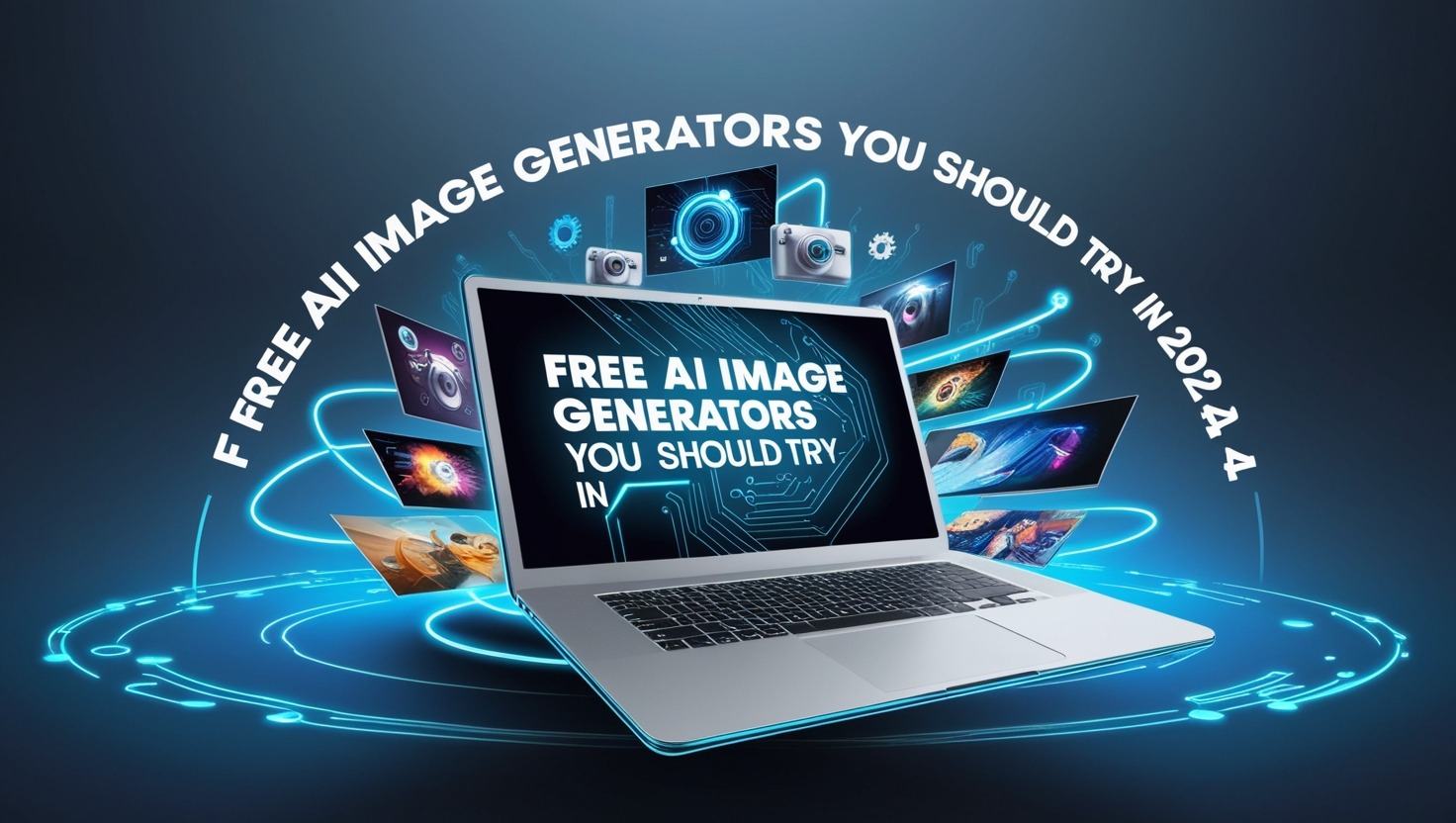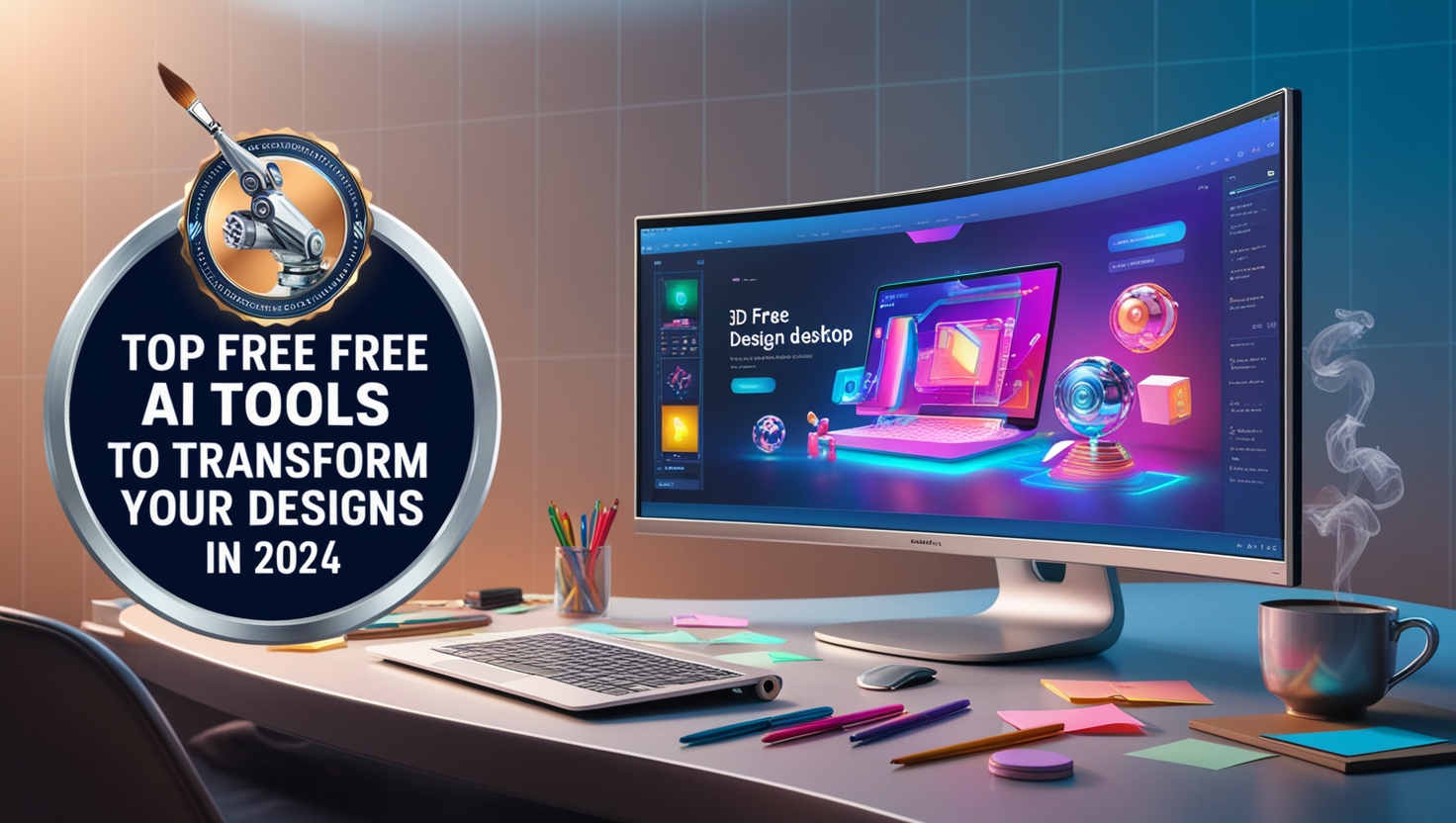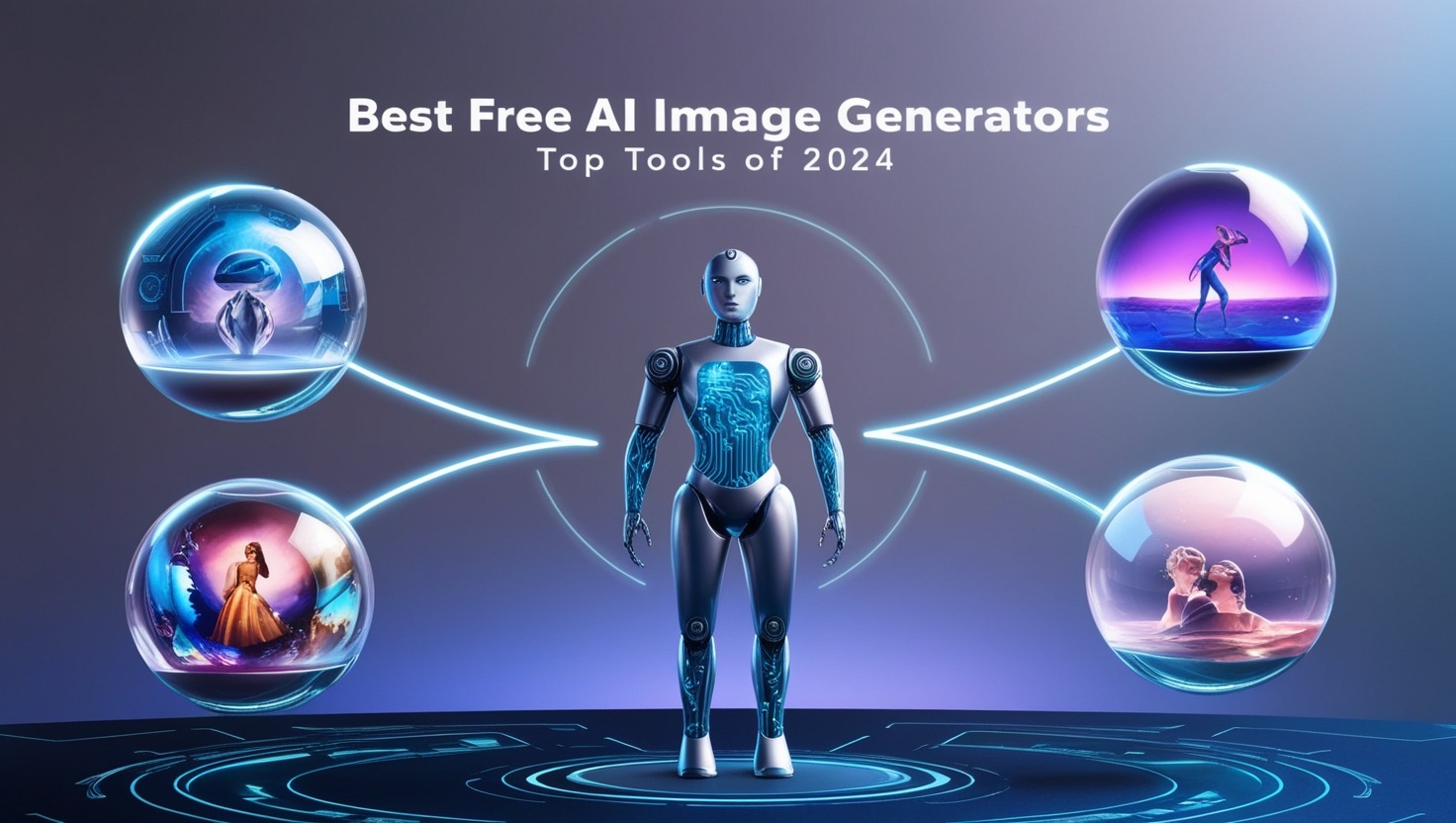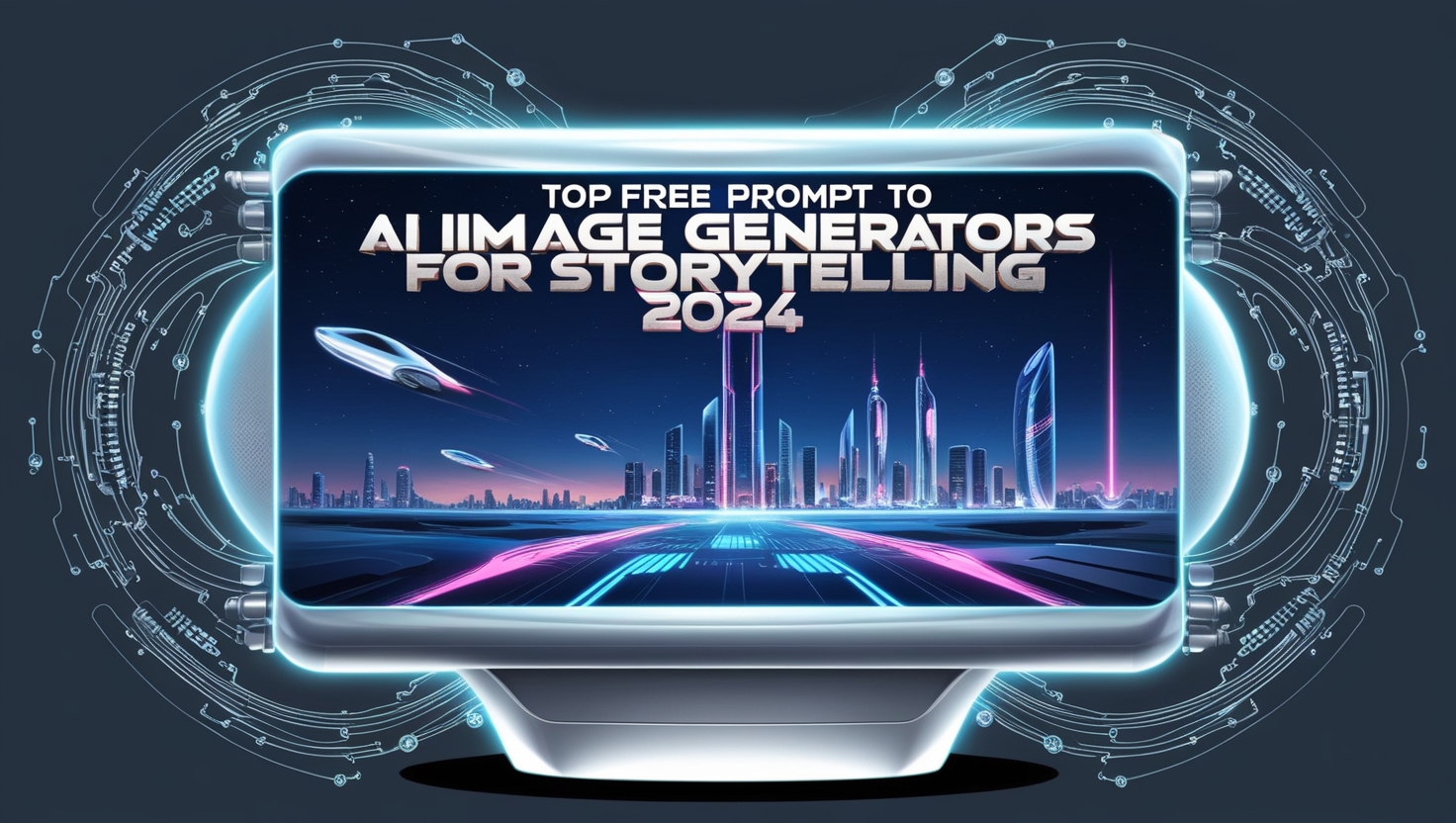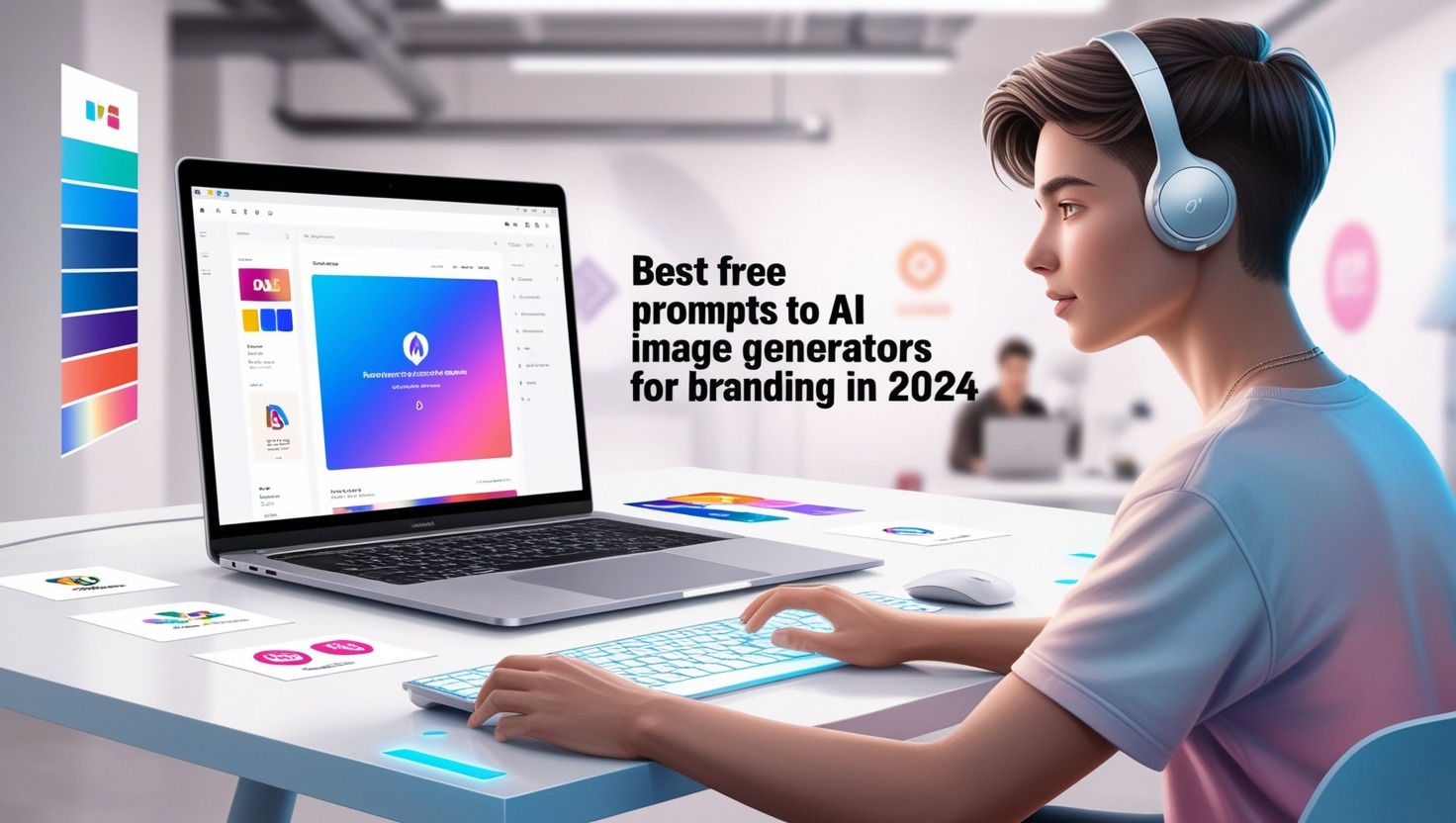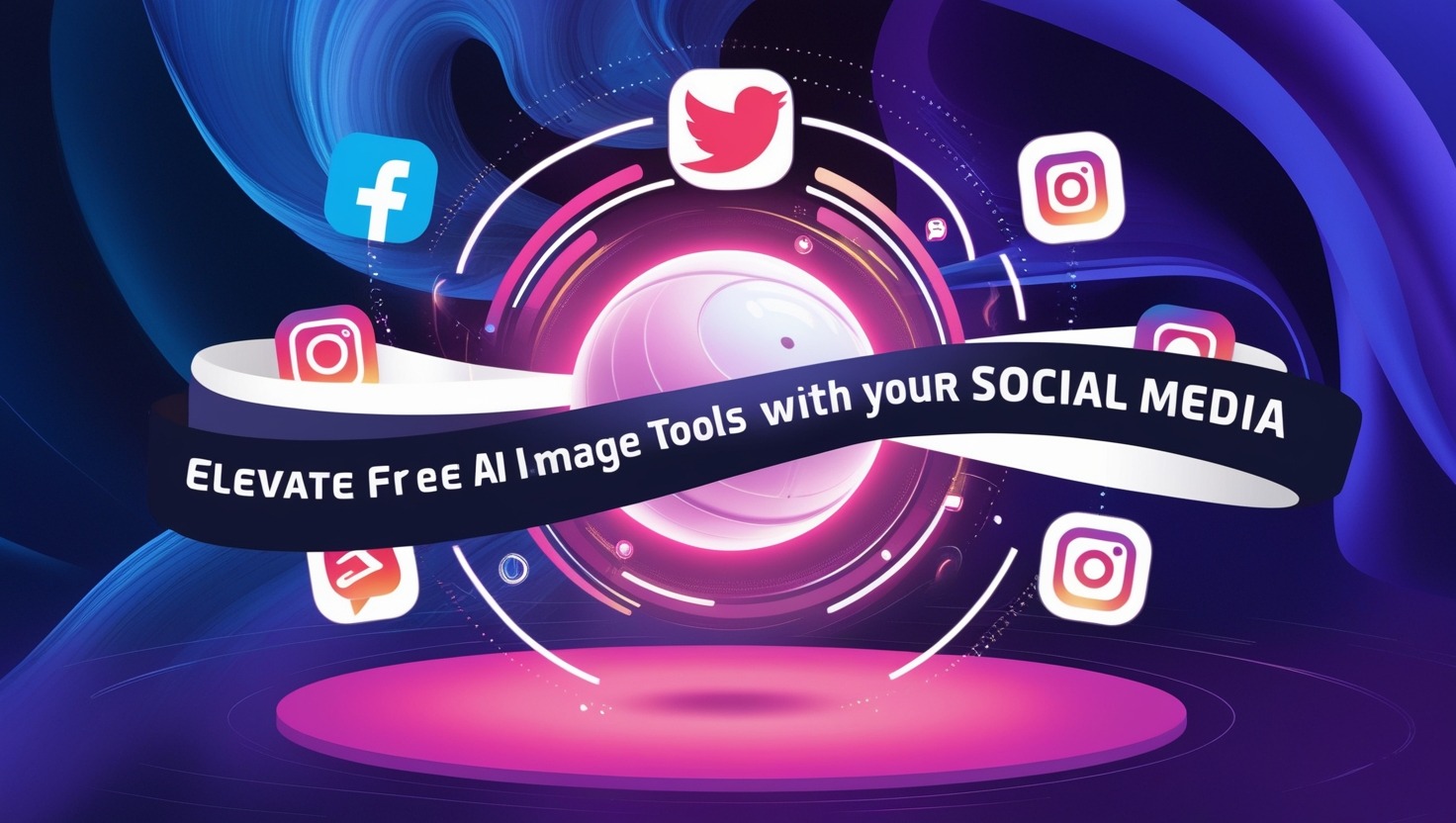
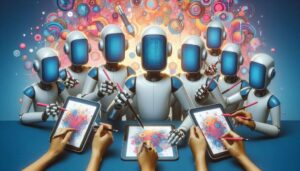
Top AI Image Generators for Designers in 2024
AI Image Generators for Designers
Introduction
AI image generators have revolutionized the way designers create visual content. These tools use advanced algorithms to transform text prompts into detailed images, offering endless possibilities for creativity and innovation. In 2024, AI image generators are more relevant than ever, providing designers with powerful resources to enhance their work.
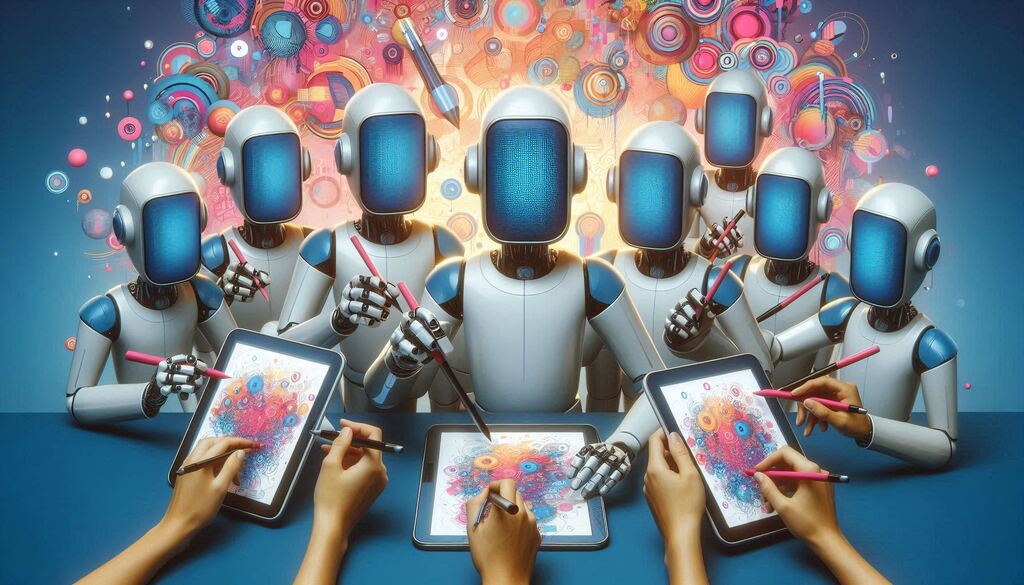
Overview of AI Image Generators
AI image generators leverage machine learning models to produce images based on textual descriptions. These models, such as DALL-E 3 and Midjourney, have been trained on vast datasets, enabling them to generate high-quality images that can range from photorealistic to highly stylized. Designers can use these tools to quickly visualize concepts, create unique artwork, and even generate marketing materials.
Table of Contents
Evolution of AI Image Generators
Historical Background of AI Image Generators
Early Experiments and Foundations
The journey of AI image generators began with early experiments in computer graphics and machine learning. In the 1960s and 1970s, pioneers like Harold Cohen developed programs such as AARON, which could create art autonomously. These early efforts laid the groundwork for future advancements by demonstrating the potential of computers in creative processes.
Neural Networks and Image Processing in the 1990s
The 1990s saw significant progress with the exploration of neural networks for image processing. Researchers began to understand how these networks could be trained to recognize and generate images. This period was crucial for establishing the foundational techniques that would later be refined and expanded upon.
The Rise of Generative Adversarial Networks (GANs)
The 2010s marked a pivotal moment with the introduction of Generative Adversarial Networks (GANs) by Ian Goodfellow and his colleagues in 2014. GANs consist of two neural networks, a generator and a discriminator, that work together to create realistic images. This innovation enabled the generation of high-quality images from scratch, revolutionizing the field of AI image generation.
Key Milestones Leading Up to 2024
Several key milestones have shaped the evolution of AI image generators:
- DALL-E (2021): Developed by OpenAI, DALL-E is a model capable of generating images from textual descriptions. It demonstrated the potential of combining natural language processing with image generation, opening new avenues for creativity.
- Midjourney (2022): Midjourney is another significant development that pushed the boundaries of AI image generation. It focused on creating highly detailed and aesthetically pleasing images, further enhancing the capabilities of AI in the creative industry.
- StyleGAN (2018): Developed by NVIDIA, StyleGAN introduced a new level of control over the generation process, allowing users to manipulate specific features of the generated images. This model became popular for creating realistic human faces.
- BigGAN (2018): Another breakthrough from Google, BigGAN improved the quality and diversity of generated images by using larger datasets and more sophisticated training techniques.
Current State and Future Trends
By 2024, AI image generators have become essential tools for designers, artists, and various industries. They offer unprecedented creative capabilities, enabling users to generate high-quality images with minimal effort. The future trends in AI image generation include:
- Enhanced User Interfaces: Making AI image generators more user-friendly and accessible to a broader audience.
- Integration with Other Technologies: Combining AI image generation with augmented reality (AR) and virtual reality (VR) to create immersive experiences.
- Ethical Considerations: Addressing ethical concerns related to the use of AI-generated images, such as copyright issues and the potential for misuse.
- Continued Advancements: Ongoing research to improve the quality, speed, and versatility of AI image generators.
AI image generators have come a long way from their early beginnings, and their evolution continues to shape the future of creativity and design.
Technological Advancements in AI Image Generation
Enhanced Algorithms and Models
Recent advancements in AI image generation have significantly improved the underlying algorithms and models, leading to higher quality and more diverse outputs. Two key techniques that have driven these improvements are:
- Diffusion Models: These models generate images by iteratively refining a noisy image until it becomes clear and detailed. This process allows for the creation of highly realistic images with fine details. Diffusion models have shown great promise in generating complex scenes and textures.
- Transformers: Originally developed for natural language processing, transformers have been adapted for image generation. They excel at capturing long-range dependencies and complex patterns in data, making them ideal for generating coherent and detailed images. Transformers have enabled the creation of images that are not only realistic but also contextually accurate.
Integration with Other Technologies
- Natural Language Processing (NLP): By combining NLP with image generation, users can create images based on textual descriptions. This integration allows for more intuitive interactions, where users can simply describe what they want, and the AI generates the corresponding image. Models like DALL-E are prime examples of this synergy.
- Computer Vision: Integrating computer vision techniques with AI image generators enhances their ability to understand and manipulate existing images. This combination allows for tasks such as image editing, style transfer, and object recognition, making the tools more versatile and powerful.
Improved User Interfaces and Workflows
- Intuitive Interfaces: Modern AI image generators feature user-friendly interfaces that simplify the process of creating and editing images. These interfaces often include drag-and-drop functionality, real-time previews, and easy-to-use controls, allowing users of all skill levels to harness the power of AI.
- Seamless Workflows: Integration with other design tools and platforms has streamlined workflows, enabling designers to incorporate AI-generated images into their projects effortlessly. This seamless integration reduces the time and effort required to create high-quality visuals.
Accessibility and Empowerment
- Broader User Base: With improved interfaces and integration, AI image generators are no longer limited to experts in AI or computer graphics. Designers, artists, marketers, and even hobbyists can now leverage these tools to enhance their creative projects.
- Creative Empowerment: AI image generators provide users with unprecedented creative capabilities. They can generate unique and high-quality images quickly, experiment with different styles and concepts, and bring their creative visions to life with minimal effort.
Future Trends
- Ethical Considerations: As AI-generated images become more prevalent, addressing ethical concerns such as copyright, authenticity, and potential misuse will be crucial. Developing guidelines and frameworks to ensure responsible use will be essential.
- Enhanced Realism: Ongoing research will continue to improve the realism and quality of generated images, making them indistinguishable from real photographs.
- Personalization: AI image generators will become more personalized, allowing users to tailor the outputs to their specific preferences and needs.
- Integration with Emerging Technologies: The integration of AI image generation with emerging technologies like augmented reality (AR) and virtual reality (VR) will create new possibilities for immersive and interactive experiences.
In summary, the technological advancements in AI image generation have made these tools more powerful, versatile, and accessible, opening up new creative possibilities for a wide range of users.
Top AI Image Generators in 2024
Microsoft Designer’s Image Creator
Microsoft Designer’s Image Creator is a cutting-edge tool that leverages AI to transform text prompts into vivid, high-resolution images. This feature is particularly beneficial for designers, enabling them to create custom images effortlessly. Microsoft Designer uses the DALL-E model to ensure high-quality outputs that closely match the user’s descriptions.
Key Features:
- Versatile Image Generation: Generate images for various projects, such as social media graphics, marketing materials, and conceptual art.
- Photo Editing: Edit photos, blur backgrounds, and apply different styles to enhance visuals.
- High Precision: Ensures that the generated images closely match the user’s descriptions, providing a high level of detail and accuracy.
The versatility and precision of Microsoft Designer make it an invaluable asset for creative professionals, allowing them to bring their ideas to life with ease.
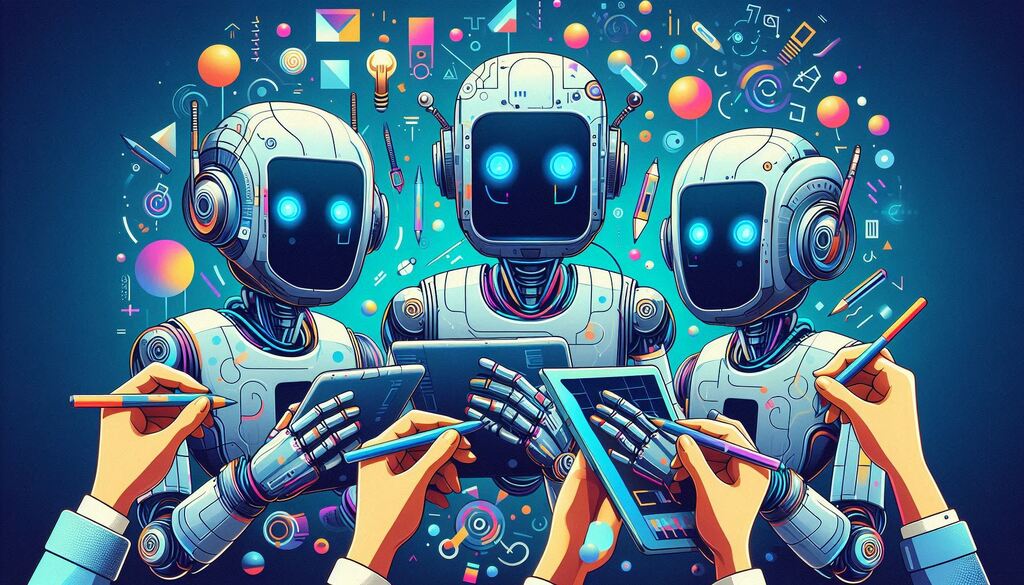
Stability AI’s DreamStudio
Stability AI’s DreamStudio is known for its extensive customization options and user-friendly interface, making it a favorite among designers. Users can tweak generated images to better match their vision, thanks to the platform’s intuitive controls.
Key Features:
- Customization: Extensive options to adjust and refine images to better match the user’s vision.
- Performance and Quality: Utilizes the latest Stable Diffusion models to produce detailed and realistic images.
- Variety of Styles: Supports various styles and themes, allowing for a wide range of creative possibilities.
DreamStudio’s robust customization capabilities ensure that users can achieve the exact look and feel they desire for their projects, making it a powerful tool for creative professionals.
Imagen 2 in Gemini
Imagen 2 in Gemini stands out for its unique selling points and seamless integration with Google services. This powerful text-to-image model delivers photorealistic outputs that align closely with user prompts.
Key Features:
- Photorealistic Outputs: Generates high-quality images from detailed descriptions.
- Integration with Google Services: Integrated into Google’s Search Generative Experience and other services, enhancing user experience and accessibility.
- Productivity Boost: Easy incorporation of generated images into workflows, boosting productivity and creativity.
The model’s ability to generate high-quality images from detailed descriptions makes it a valuable tool for marketers and designers alike, ensuring seamless integration with existing workflows.
Wombo Dream
Wombo Dream is renowned for its mobile accessibility and ease of use. Available on both iOS and Android, this app allows users to create stunning AI-generated art on the go.
Key Features:
- Mobile Accessibility: Available on both iOS and Android, allowing users to create art on the go.
- Intuitive Interface: Simple for anyone to generate artwork by entering a text prompt and selecting an art style.
- Community Engagement: Vibrant community that shares and discusses their creations, fostering a collaborative environment.
The app’s accessibility ensures that users of all skill levels can explore their creativity and produce unique digital artworks effortlessly, making it a popular choice for mobile users.
These tools highlight the diverse capabilities and applications of AI image generators, each offering unique features that cater to different needs and preferences in the creative industry.
Applications in Design
Graphic Design
AI image generators are transforming the field of graphic design by boosting both creativity and productivity. These tools can quickly create unique visuals, allowing designers to experiment with various styles and concepts. For example, AI can generate multiple logo variations in just a few minutes, which saves time and enhances productivity. There have been successful projects where AI-generated artwork has been used for album covers and book illustrations, demonstrating the potential of AI in graphic design.
Marketing and Advertising
In marketing and advertising, AI image generators are used to create compelling visuals for campaigns. Brands use AI to produce eye-catching graphics that resonate with their target audience. Case studies show that companies like Nike and Coca-Cola have used AI to design personalized ads, which has improved their marketing efforts. These tools help create visuals that stand out in advertising campaigns, making them more effective and engaging.
Web and App Design
Streamlining the Design Process
AI image generators are significantly improving the efficiency of web and app design.
- Quick Production of Wireframes, Mockups, and Prototypes:
- Wireframes: These are basic layouts that outline the structure and functionality of a webpage or app. AI tools can generate these wireframes quickly, providing a solid starting point for designers.
- Mockups: These are more detailed designs that include colors, images, and typography. AI can create multiple mockup variations, allowing designers to choose the best one without spending hours on manual design.
- Prototypes: These are interactive models that simulate the user experience. AI can help in building these prototypes faster, enabling designers to test and refine their ideas more efficiently.
- Reducing Time and Effort:
- By automating the initial stages of design, AI tools save a lot of time. Designers no longer need to start from scratch; instead, they can use AI-generated templates and focus on refining and customizing them.
- This reduction in time and effort allows designers to concentrate on the creative aspects of their work, leading to more innovative and polished final products.
- Enhancing Efficiency:
- The entire design process becomes more streamlined. With AI handling the repetitive and time-consuming tasks, designers can work more efficiently and meet tight deadlines without compromising on quality.
Overall, AI image generators are making the design process faster, more efficient, and more creative, allowing designers to produce high-quality work with less effort.
Integration with Design Tools and Platforms
AI image generators are designed to work seamlessly with popular design tools and platforms, which greatly enhances the workflow for web and app design.
- Seamless Integration:
- AI image generators can be integrated directly into design tools like Adobe XD and Figma. This means designers can use AI-generated elements within the same environment they are already familiar with, without needing to switch between different applications.
- Enhanced Workflows:
- By incorporating AI-generated elements directly into their projects, designers can streamline their workflows. For example, if a designer needs a specific graphic or layout, they can generate it using AI and immediately incorporate it into their design project. This reduces the time spent on manual creation and allows for quicker iterations.
- Smooth and Cohesive Design Experience:
- The integration ensures that the AI-generated elements fit seamlessly with the rest of the design. This cohesive experience is crucial for maintaining a consistent look and feel across the project. Designers can easily tweak and customize AI-generated elements to match their vision.
- Examples of Impact:
- Adobe XD: Known for its user-friendly interface and powerful features, Adobe XD now includes AI tools that help in generating design elements, automating repetitive tasks, and providing design suggestions.
- Figma: A collaborative design tool that allows multiple designers to work on a project simultaneously. With AI integration, Figma can offer smart design recommendations, generate components, and even assist in creating responsive designs.
Overall, the integration of AI image generators with design tools like Adobe XD and Figma makes the design process more efficient, creative, and enjoyable. Designers can focus more on their creative ideas and less on the repetitive tasks, leading to higher quality and more innovative designs.
Challenges and Considerations
AI-generated content indeed brings up several ethical and legal issues, particularly around copyright and fair use.
Ethical and Legal Issues
Copyright Concerns
- Ownership of AI-Created Works:
- Traditional Copyright Laws: These laws typically grant copyright protection to works created by humans. However, AI-generated content complicates this because the AI, not a human, creates the work. Current laws do not recognize AI as an author, meaning AI-generated works are not eligible for copyright protection.
- Human Involvement: If a human significantly contributes to the creation process, such as by providing detailed prompts or making substantial edits, they might claim some level of ownership. However, this is still a gray area and often requires legal interpretation.
- Use of Existing Copyrighted Materials:
- Training Data: AI models are trained on vast datasets that often include copyrighted materials. This raises questions about whether using these materials without explicit permission constitutes copyright infringement.
- Derivative Works: When AI generates content that closely resembles existing copyrighted works, it can be seen as creating derivative works, which are also protected under copyright laws.
Fair Use
- Definition and Application:
- Fair Use Doctrine: This legal principle allows limited use of copyrighted material without permission for purposes such as criticism, comment, news reporting, teaching, scholarship, or research. However, determining what constitutes fair use is complex and context-dependent.
- Transformative Use: One key factor in fair use is whether the new work is transformative, meaning it adds new expression or meaning to the original. AI-generated content often raises questions about whether it is sufficiently transformative to qualify as fair use.
- Legal Challenges:
- Lawsuits and Precedents: There have been several high-profile lawsuits involving AI-generated content. For example, Getty Images sued Stability AI, alleging that the company used millions of its images without permission to train its AI models. These cases are still being resolved and will likely set important legal precedents.
- Legal Expertise: Navigating these issues often requires specialized legal knowledge. Companies and individuals using AI tools should consult with legal experts to ensure they comply with copyright laws and fair use principles.
Navigating Legal Challenges
- Best Practices:
- Licensing Agreements: Whenever possible, obtain licenses for the materials used to train AI models. This can help mitigate the risk of copyright infringement.
- Transparency and Documentation: Keep detailed records of the sources and processes used in creating AI-generated content. This can be crucial in defending against potential legal claims.
- Future Developments:
- Evolving Laws: As AI technology advances, copyright laws will likely evolve to address these new challenges. Staying informed about legal developments is essential for anyone involved in creating or using AI-generated content.
By understanding and addressing these ethical and legal issues, creators and users of AI-generated content can better navigate the complex landscape of copyright and fair use.
Quality and Reliability in AI Image Generators
Quality
- Output Quality:
- High-Resolution Images: Many AI image generators can produce high-resolution images that are visually appealing and detailed. This is particularly useful in fields like healthcare, where clear and precise images are crucial.
- Realism and Creativity: The quality of AI-generated images can range from highly realistic to creatively abstract, depending on the model and its training data. For instance, tools like Stability AI’s DreamStudio are known for their ability to generate both realistic and artistic images.
- Consistency:
- Consistency in Quality: While AI models strive for consistency, the quality of output can vary. Factors such as the complexity of the prompt and the model’s training data can influence the final result. Ensuring consistent quality often requires fine-tuning the model and using high-quality training datasets.
Reliability
- Dependability:
- Performance: Reliable AI image generators consistently produce high-quality images across different prompts and use cases. This reliability is essential in healthcare, where accurate and dependable images can aid in diagnosis and treatment planning.
- Error Rates: While AI models are improving, they are not infallible. Occasional errors or unexpected outputs can occur, highlighting the need for human oversight, especially in critical applications like healthcare.
- Robustness:
- Handling Diverse Inputs: Reliable AI image generators can handle a wide range of inputs and still produce high-quality outputs. This robustness is crucial for applications that require flexibility and adaptability.
Variability
- Output Variability:
- Diverse Results: AI image generators can produce a wide variety of images from the same prompt, offering creative flexibility. However, this variability can be a double-edged sword, as it may lead to inconsistent results.
- Control Mechanisms: Some tools offer features to control variability, allowing users to fine-tune the level of randomness in the generated images. This can help achieve a balance between creativity and consistency.
Dependence on Prompt Accuracy
- Prompt Engineering:
- Precision in Prompts: The accuracy and specificity of the prompt significantly impact the quality of the generated image. Detailed and well-crafted prompts are more likely to yield high-quality and relevant images.
- Iterative Refinement: Often, generating the desired image requires refining the prompt through multiple iterations. This process helps in honing the prompt to better guide the AI model.
- Impact on Output:
- Direct Correlation: There is a direct correlation between prompt accuracy and output quality. Vague or ambiguous prompts can lead to subpar or irrelevant images, while precise prompts enhance the likelihood of obtaining high-quality results.
Future Trends
Emerging Technologies and Potential Innovations
- Generative Adversarial Networks (GANs):
- GANs consist of two neural networks, a generator and a discriminator, that work together to create highly realistic images. The generator creates images, while the discriminator evaluates them. This process continues until the generator produces images that are indistinguishable from real ones.
- Diffusion Models:
- These models generate images by gradually adding noise to a simple image and then reversing the process to create a detailed and realistic image. This technique allows for the creation of high-quality images from textual descriptions.
- Innovations like DALL·E 3 and Stable Diffusion:
- DALL·E 3: An advanced AI model that can generate highly detailed and creative images from textual descriptions. It pushes the boundaries of what AI can achieve in image generation.
- Stable Diffusion: Another cutting-edge technology that focuses on creating stable and high-quality images, allowing for greater control and customization in the generated images.
Future Trends in AI Image Generation
- Integration of Multi-Modal Capabilities:
- Future AI systems will be able to understand and generate content across different types of media, such as text, images, and audio. This means that an AI could create a cohesive piece of content that includes written text, images, and even sound, all working together seamlessly.
- Democratization of AI Tools:
- Advanced AI image generation tools will become more accessible to a broader audience, including non-experts. This democratization will enable more people to use these tools for creative applications, leading to a surge in innovations across various industries.
These emerging technologies and future trends are set to revolutionize the field of AI image generation, making it more powerful, accessible, and versatile.
Predictions for the Design Industry
- Streamlined Workflows: AI tools can automate repetitive tasks, such as resizing images, adjusting colors, or generating multiple design variations. This allows designers to save time and focus on more complex aspects of their projects.
- Enhanced Creativity: AI can provide designers with new ideas and inspiration by generating unique patterns, styles, and compositions. This can help designers push the boundaries of their creativity and explore new design possibilities.
- High-Quality Visuals: AI image generators can produce high-resolution images with precise details, which can be especially useful for creating professional-grade visuals quickly and efficiently.
- Indispensable Tool: As AI technology continues to advance, it is expected to become an essential part of the designer’s toolkit. Designers will rely on AI to handle technical tasks, allowing them to concentrate on the conceptual and strategic elements of their work.
- New Forms of Digital Art and Design: AI-generated images can lead to the creation of entirely new art forms and design styles. This can expand the creative landscape and offer designers new ways to express their ideas.
Overall, AI image generation is set to revolutionize the design industry by making processes more efficient, enhancing creativity, and opening up new avenues for artistic expression.
Long-term Impact on the Design Industry
- Automation of Routine Tasks: AI can handle repetitive and time-consuming tasks, such as resizing images, adjusting colors, and creating multiple design variations. This automation frees up designers to focus on more creative and strategic aspects of their work.
- Powerful Creative Tools: AI provides designers with advanced tools that can generate images from simple text prompts. This capability allows designers to quickly create complex visuals without extensive manual effort, making the design process more efficient.
- Reduced Time and Effort: By using AI to generate images, designers can significantly reduce the time and effort required to produce high-quality visuals. This efficiency enables them to experiment with new ideas and concepts more freely.
- Emergence of New Design Paradigms: The capabilities of AI will lead to the development of new design methodologies and paradigms. Designers will be able to explore innovative approaches and techniques that were previously not possible, pushing the boundaries of traditional design.
- Enhanced Experimentation: With AI handling the technical aspects, designers can focus on experimenting with creative ideas. This shift encourages more innovation and exploration in the design process, leading to unique and groundbreaking designs.
Overall, AI image generation is set to transform the design industry by making processes more efficient, enhancing creativity, and enabling designers to explore new possibilities.
Comparison of AI Image Generators
Feature Comparison
- Integration with AI Text Generators:
- Function: AI text generators can create written content based on specific prompts.
- Benefit: When combined with AI image generators, designers can produce visuals that perfectly match the generated text. For example, a text generator can create a product description, and the image generator can produce corresponding product images, ensuring consistency and coherence.
- Synergy with Chatbots:
- Function: Chatbots can interact with users to gather requirements and preferences.
- Benefit: This information can then be fed into AI image generators to create personalized designs. For instance, a chatbot can ask a user about their preferred color scheme and style, and the AI image generator can produce a design that matches these preferences.
- Holistic AI-Driven Design Workflows:
- Function: By integrating various AI tools, designers can create seamless workflows where different AI systems work together.
- Benefit: For example, an AI text generator can draft a marketing campaign, a chatbot can gather customer feedback, and an AI image generator can create visuals for the campaign. This holistic approach ensures that all elements of the design process are interconnected and optimized.
- Enhanced Integration:
- Function: The integration of multiple AI tools allows for more efficient and cohesive design processes.
- Benefit: Designers can leverage the strengths of each tool to produce high-quality outputs quickly and effectively.
- AI Tools Working Together:
- Function: When AI tools are integrated, they can complement each other’s capabilities.
- Benefit: For example, an AI text generator can provide context and narrative, while an AI image generator can create visuals that enhance the story. This synergy results in more engaging and impactful designs.
Overall, the integration of AI image generators with other AI tools can lead to more efficient, cohesive, and innovative design workflows.
User Experience
Ease of Use and Learning Curve
- DALL·E 3:
- Ease of Use: DALL·E 3 is known for its user-friendly interface. It provides straightforward prompts and clear instructions, making it accessible for both beginners and professionals.
- Learning Curve: The learning curve is relatively gentle, allowing users to quickly get accustomed to the tool and start generating high-quality images with minimal effort.
- Adobe Firefly:
- Ease of Use: Adobe Firefly integrates seamlessly with other Adobe products, which many designers are already familiar with. This integration enhances the overall ease of use.
- Learning Curve: Similar to DALL·E 3, Adobe Firefly offers an intuitive interface that caters to users of all skill levels, making the learning process smooth and efficient.
- Stable Diffusion:
- Ease of Use: Stable Diffusion offers advanced customization options, which can be very powerful but might initially seem overwhelming to new users.
- Learning Curve: Due to its advanced features, Stable Diffusion requires a bit more time to master. However, once users become familiar with it, they can leverage its capabilities to create highly customized and detailed images.
- Midjourney:
- Ease of Use: Midjourney is praised for its artistic outputs, but its interface and features might be more complex compared to DALL·E 3 and Adobe Firefly.
- Learning Curve: The learning curve for Midjourney is steeper, requiring users to invest more time in understanding its functionalities. However, the artistic quality of the outputs makes it worthwhile for those who seek creative and unique designs.
Feedback from Designers and Users
- DALL·E 3:
- Positive Feedback: Users appreciate the high-quality outputs and simplicity of DALL·E 3. Its ease of use makes it a popular choice among designers who need to generate images quickly and efficiently.
- Areas for Improvement: Some users might desire more advanced customization options to further refine their designs.
- Adobe Firefly:
- Positive Feedback: Adobe Firefly receives positive feedback for its seamless integration with other Adobe products. This integration enhances the workflow for designers who use multiple Adobe tools.
- Areas for Improvement: Users might want more standalone features that do not rely on other Adobe products.
- Stable Diffusion:
- Positive Feedback: Users acknowledge the powerful capabilities of Stable Diffusion once they become familiar with it. Its advanced features allow for highly detailed and customized images.
- Areas for Improvement: The initial complexity can be a barrier for new users, so more user-friendly tutorials and guides could help ease the learning process.
- Midjourney:
- Positive Feedback: Midjourney is praised for its artistic and creative outputs, making it a favorite among designers looking for unique and visually striking images.
- Areas for Improvement: The steeper learning curve can be challenging, so additional resources and support for new users would be beneficial.
In conclusion,
The landscape of AI image generators in 2024 offers a diverse array of tools tailored to meet the needs of designers. From the highly efficient and user-friendly Microsoft Designer’s Image Creator, which stands out for its cost-effectiveness and speed, to DALL-E 3 by OpenAI, known for its detailed and lifelike images, designers have a wealth of options to choose from.
Other notable mentions include Midjourney for its superior image quality, Stable Diffusion for customization, and Adobe Firefly for seamless integration into photos. Each of these tools brings unique strengths, making it easier than ever for designers to bring their creative visions to life.
Ultimately, the best AI image generator will depend on individual needs, whether it’s for professional design work, brand representation, or personal projects. The advancements in AI technology continue to push the boundaries of what’s possible, offering exciting opportunities for designers in 2024 and beyond.
FAQs ( frequently asked questions )
What are AI image generators?
AI image generators use algorithms to create images from text prompts or other inputs.
How do AI image generators benefit designers?
They enhance creativity, save time, and provide new design possibilities.
Are AI-generated images copyright-free?
It depends on the tool and its terms of use; always check the licensing agreements.
Which AI image generator is best for beginners?
Microsoft Designer’s Image Creator is user-friendly and free to use.
Can AI image generators replace human designers?
They are tools to assist designers, not replace them; human creativity and judgment are still crucial.
What are the costs associated with AI image generators?
Pricing models vary; some tools offer free versions, while others require subscriptions.
How do AI image generators handle privacy and data security?
Most reputable tools have strict privacy policies and data security measures.
Can AI image generators be used for commercial purposes?
Yes, but it’s important to review the licensing agreements of each tool.
What are the limitations of AI image generators?
They may struggle with complex prompts and require human oversight for best results.
How can designers stay updated with the latest AI image generation trends?
Joining online communities, attending webinars, and following industry news.


